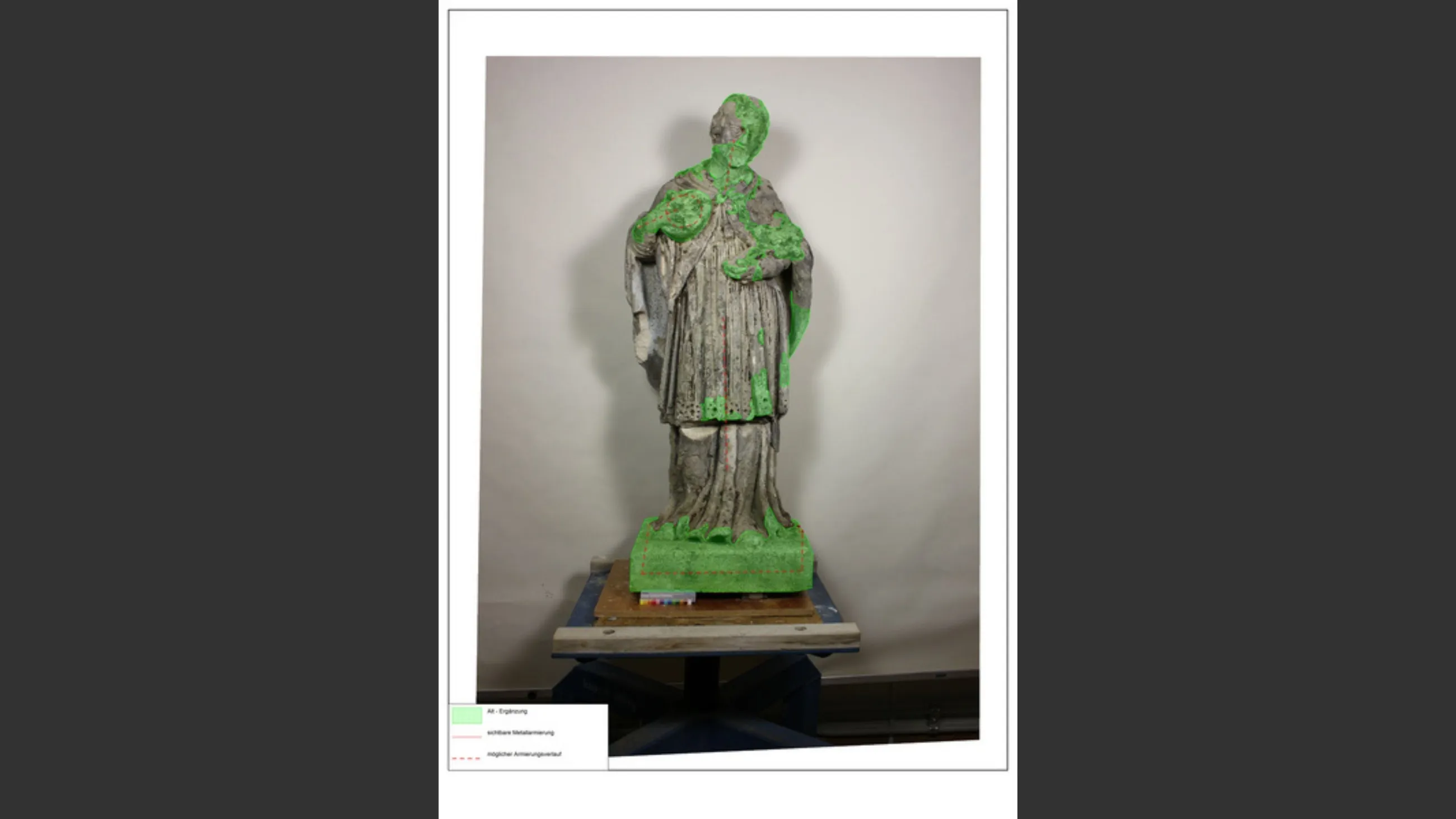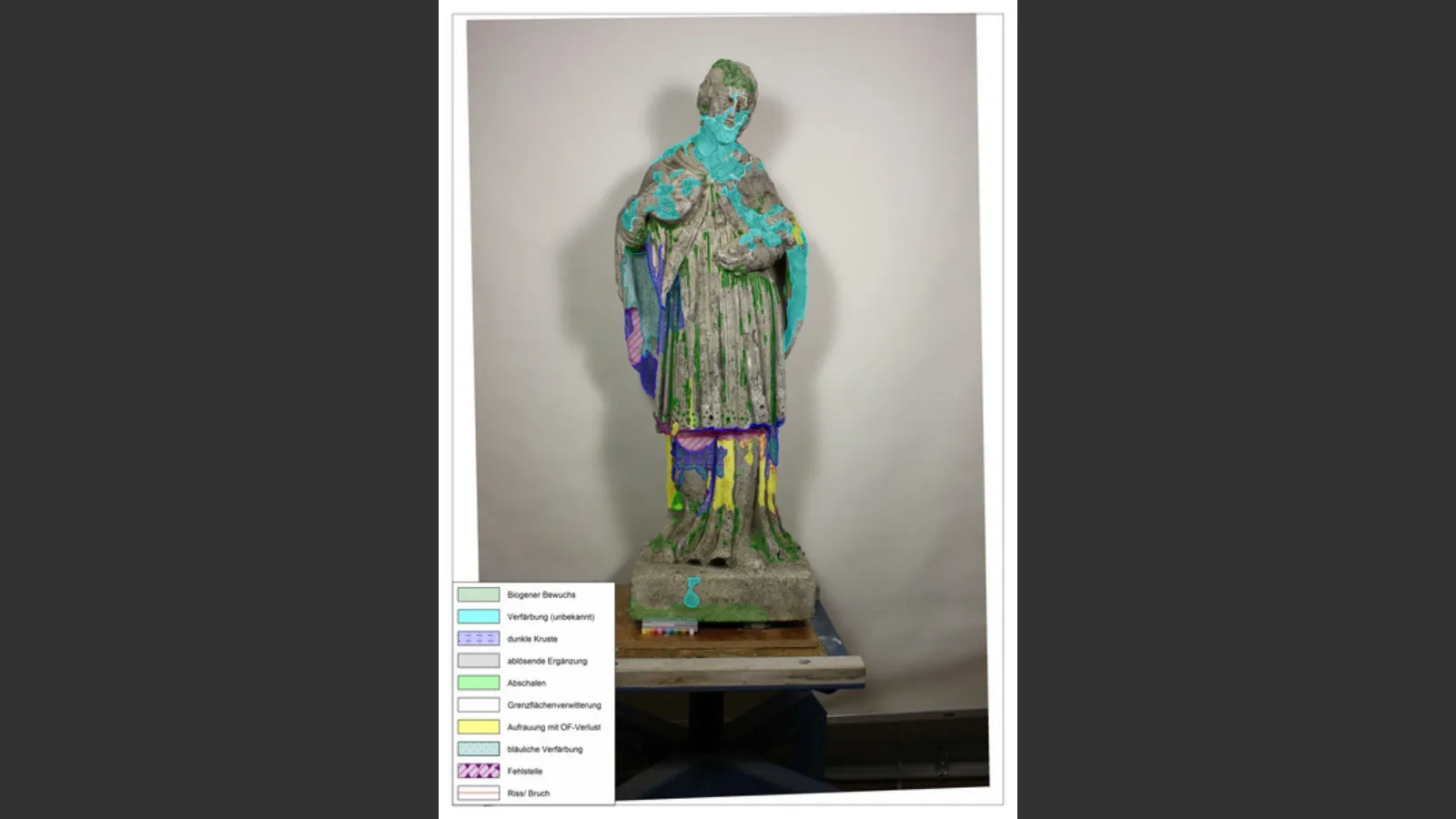Stone | Garden Sculpture Nepomuk
Inventory and condition survey and development of a conservation concept

Loan: Prof. Dr. Dr. med. Johannes C. Bruck
Dating: ca. 1860
Description
The object to be worked on is a privately owned sandstone sculpture depicting St. Nepomuk. This could be confirmed iconographically by the attributes biretta, crucifix, surplice and mozetta.
The monolithic sculpture is 1.02m high and stands on a 33.0 x 33.0 [cm] plinth. It has been exposed to the weather outdoors since around 1965, but is in a good state of preservation. The sculpture has a baroque design and according to the owner it is about 150 years old. Unfortunately, no further information on the history of the sculpture's production could be found.
The object underwent a previous restoration at least once, as numerous additions were made, which were reinforced with metals and have a good sculptural quality. These include the head and collar area, both hands including the attributes, parts of the robe, as well as the complete plinth and parts of the feet. Corroding iron parts are visible on the sides of the plinth and a green-patinated – probably – copper pencil is visible in the right hand holding the biretta.
These measures were recorded in a four-page inventory. The course of these additions suggests previous damage to the sculpture, as they partly hint at cracks. The condition of the object includes a complete fracture in the lower area, which is accompanied by roughened or peeling areas and missing parts below. There are also dark incrustations in rain shadow areas. Mechanical damage, such as scratches and abrasions, occurred during an earlier transport. Likewise, sections of the right-hand robe broke off during this transport and must be reassembled and glued back on. Furthermore, there are discoloured areas on the entire sculpture, whereby it is not yet clear whether these are caused by patina or biological growth. Furthermore, there are numerous organisms, especially mosses, on the entire sculpture. This was also recorded in a condition mapping of all four view sides.
The following measures are currently considered necessary
- Gentle cleaning with a hot steam device to remove the microbiology but not to endanger the age value.
- Formulation of an adhesive to fix the central fracture and secure the statics, as well as to join and attach the individual fracture pieces.
- Formulation of an injection compound to reattach individual shells to the object.
- Formulation of a stone supplementary compound to close the remaining voids. [As the present supplements appear to have very good compatibility with the stone, a mortar sample of the old applications should be analysed in order to be able to create an equivalent compound and keep the variety of materials on the object to a low level].
- Treatment of the corroding iron in the plinth area to mitigate any potential for damage. The remaining reinforcements are inactive despite exposure in the exterior and do not require treatment.
Project participants
Project support
Project support
- Prof. Gottfried Hauff
Students
- Johanna Menningen, tutor in the second M. A. semester
- Thomas Gdanitz, 5th semester, processor

